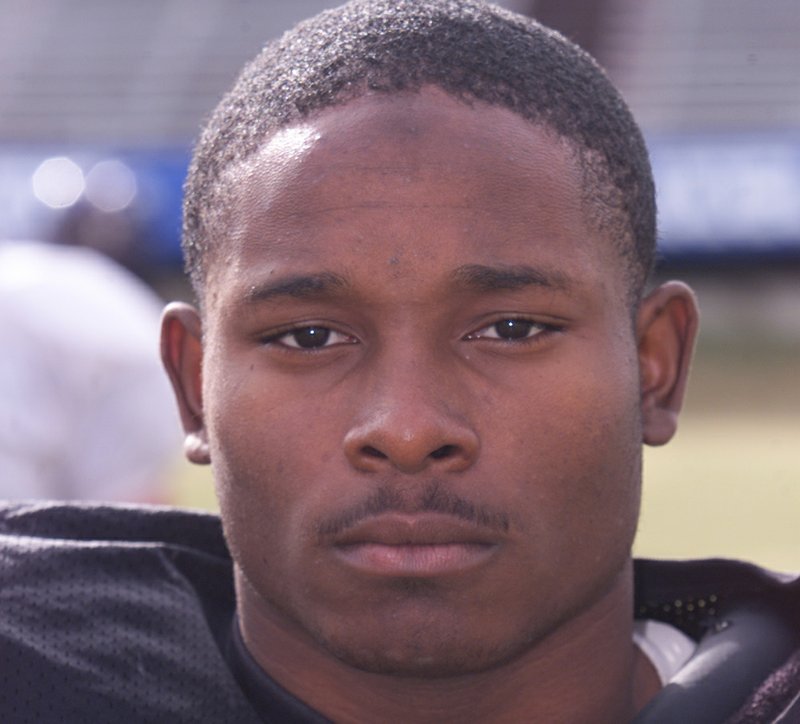LITTLE ROCK — As Norman Baker watched from Quincy Palmer’s corner Saturday night, it appeared to the trainer that Anthony Jones had just run out of gas.
An inexperienced fighter hitting a wall, perhaps.
“You know in boxing,”Baker said Monday, “it only takes one round before you’re done.”
Baker was the Little Rock boxer’s trainer Saturday night as Palmer fought Jones, of El Dorado, in the fifth of seven bouts at Fitness Unlimited in Benton.
The event - dubbed “Benton Beatdown” - turned tragic when Palmer caught Jones with a punch toward the end of the second round. Jones fell to the mat and was counted out by referee Martin Tunstall not long after the bell to signify the end of the second round.
Jones, 28, was taken to Saline Memorial Hospital before being transferred to UAMS medical center where he was pronounced dead at 6:42 a.m. Sunday.
Pulaski County coroner Garland Cooper, who confirmed the time of death, said he had not yet seen the results of an autopsy that was scheduled for Monday.
But a news release issued by the Arkansas State Athletic Commission, which sanctioned the event, said current information indicates Jones’ death “may not have been directly caused by his participation in the bout, but rather by underlying medical conditions which were both unknown and not detectable by any standard, medically reasonable pre-bout physical examination.”
Larry Harris, whose Sheridan-based Thunderstruck Fight Promotions organized the event, said he was informed Jones had a possible pre-existing kidney ailment.
It was something, “Nobody knew anything about,” Harris said Sunday.
The Commission released a statement Monday and a preliminary investigation report, which said Palmer and Jones went through a pre-fight physical and that “Mr. Jones was medically cleared to participate in the event.”
Jason Stuart, who attended the event as the commissioner in charge, said a physical was conducted less than two hours before the event’s 7 p.m. start.
According to the Commission’s handbook, pre-fight physicals are to include tests for blood pressure and pulse; visual observation of head and eyes with a focus on proper dilation of movement, ears, nose and throat; audible observation of lungs and heartbeat and physical examination of abdomen and orthopedic, focusing on joints.
“The physician goes through and does a pretty thorough on-site physical,” Stuart said. “[They] make sure they’re good to go, after all those evaluations, [the doctor] signs off and makes sure they don’t have any conditions.”
Baker said Palmer went through an even more exhaustive evaluation before the bout, as is custom with all of his boxers.
Baker said Palmer underwent an electrocardiograph, a magnetic resonance imaging procedure and bloodwork about a month before the event.
One fighter who was scheduled to be included in the event was held out, Baker said, because he felt the fighter wasn’t in fighting condition.
“We always take care of our guys,” said Baker, who added he didn’t know what type of testing Jones underwent beyond the pre-fight physical.
David Caldwell, Jones’ trainer, did not return a message seeking comment Monday.
Stuart said he wasn’t sure if Jones underwent any evaluations before the day of the fight.
But Jones passed the prefight physical, was licensed to box in Arkansas, and though he was making his professional debut, brought into the event a 13-3 amateur record.
Stuart said Jones’ last bout was held in October, 2009, but wasn’t sure where, and added that the commission reviews all matchups before licensing an event.
He said Palmer had about “20 or 25” amateur fights in addition to his 1-0 professional record, which indicated a career similar to Jones.
“If we [see] a 10-0 guy against a pro debut guy, we’re not going to approve that,” Stuart said. “It’s not competitive and it presents a health risk.”
Stuart said the Commission will conduct a more thorough investigation, and depending on its receipt of an autopsy report and additional medical records, could have it ready for the Commission’s next meeting scheduled for Feb. 10.
Stuart said he doesn’t foresee any changes to the commision’s rules and regulations, but added that they “continually monitor our practices.”
“We’re always on the lookout for something that can improve the health and well-being of our contestants,” Stuart said.
Saturday night, while around 500 fans watched form inside Fitness Unlimited, Stuart sat at a ringside table, next to the timekeeper. On the other side of the time keeper was the match physician and nurse.
He said Jones’ condition was never a concern, especially after he emerged from the first round ahead on the scorecards. Stuart said two of the judges had Jones leading 10-8, while another had him ahead 10-9.
But less than 12 hours after losing to Palmer by knockout, Jones became what is believed to be the second Arkansas boxer to die from injuries sustained in a ring and the first since 15-year-old amateur Jacob Greenwalt died following a Silver Gloves regional championship bout in 1997 in North Little Rock.
“There didn’t appear to be anything unusual, nothing appeared life threatening,” Stuart said. “Two heavyweights that were going at it and exchanging heavy blows. We’ve all seen it.
“We’ve got a fighter that was caught with a good shot, he went down and went limp.”
Sports, Pages 17 on 02/01/2011

